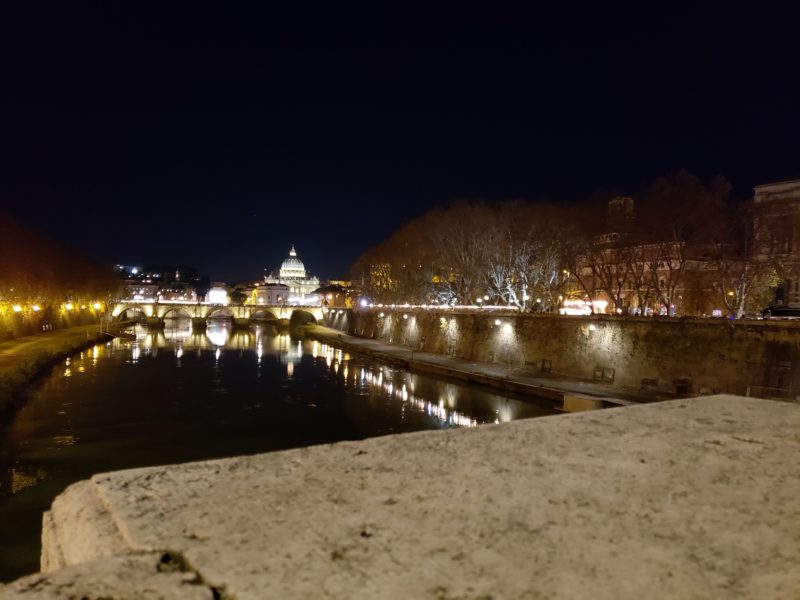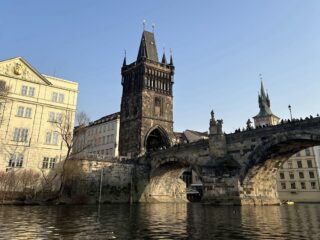By Douglas Weissman
To Romans, Italy’s capital is a fast-paced metropolis of modern culture supported by millennia of tradition. To tourists, Rome embodies the epitome of European heritage captured in an endless collection of ruins, pizzerias, and fountains. When first arriving in the Eternal City, my wife and I could trace the history with our fingertips while dragging our feet over the medieval dirt pounded between the cobblestones and antique soil supporting the remaining standing columns of the ancient Forum. We quickly realized the easiest way to tell a Roman from a tourist: tourists look up staring at all the landmarks while Romans look down worried they’ll step in dog shit. Every step in Rome feels like peeling back an onion, tearing away one more layer from the 3,000 years of history shaping the customs of the Italian capital containing Etruscans and emperors, the papacy and Bicycle Thieves (the academy award winning film but also actual bicycle thieves). While medieval and ancient history attracted approximately 9.6 million international tourists in 2017, like many cities around the world, the contemporary history becomes lost beneath the tourists shuffling between the Trevi Fountain and Spanish Steps, or scattered to the wind with tour groups whispering within the cavernous galleries of the Vatican Museum.
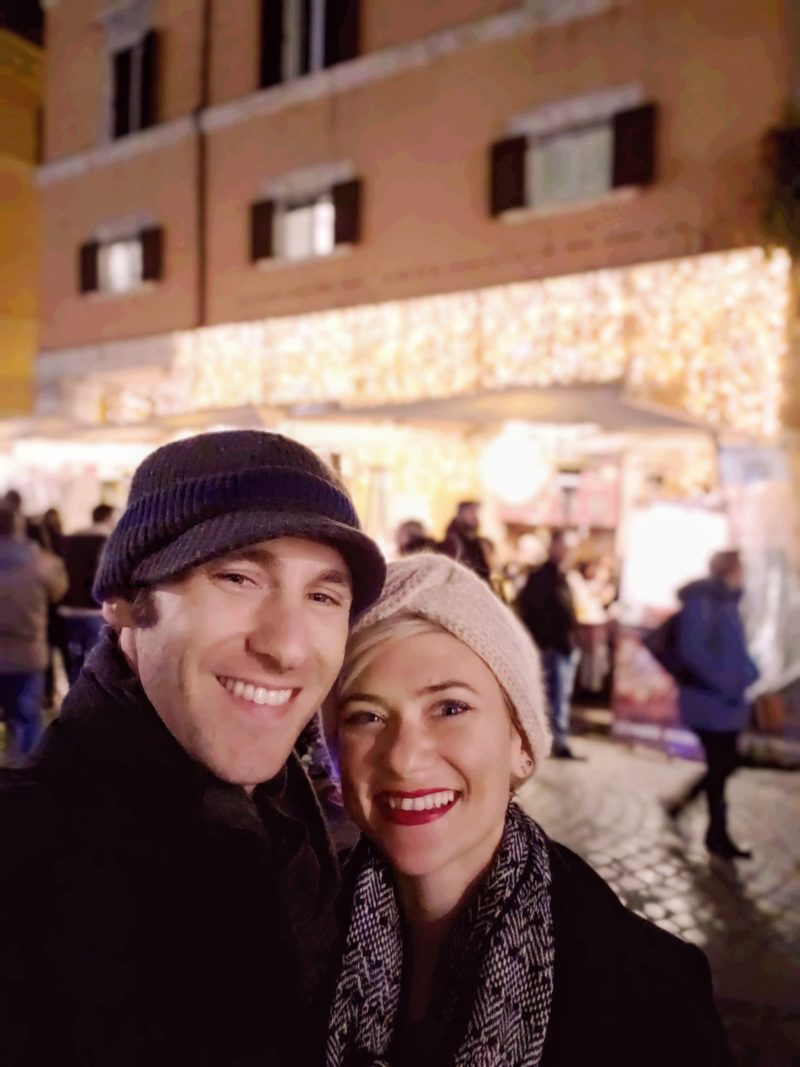
Around the corner from our apartment, near the constant crowd in Piazza San Cosimato and across the street from the relentless nightly throng at Big Star Bar, two brass square tiles sat in front of a building. My wife and I noticed them without truly understanding their significance at first or if they had any meaning beyond their placement in front of the single building in Trastevere. Hordes of people walked by the squares each morning on the way to school, in the afternoon on the way to lunch, in the evening coming home for dinner, and later when they took their dogs out for a midnight break but no one we had noticed batted an extra eyelash at these askew glistening figures standing out against the darkened stones in the afternoon sun or within the spotty streetlamps meant to shed some light in the nightly darkness.
The brass façades covering concrete cubes are called sampietrini in Italian and Stolperstein in German. The German artist Gunter Demnig began the project in the early 1990s adding the first stone in Rome in 2010 and reaching 207 sampietrini by 2017 dedicated to Jews and political dissidents caught, disarmed, and deported to labor and death camps during World War II. The name actually means “stumbling stone,” referring to how the artist has raised the monument slightly above the surrounding pavement in order for the brass plate to trip passersby. The small text requires the spectator bend over in an imitation of a bow, causing the onlooker to pay respect to the honored dead and forced to remember the lingering ghosts of the disappeared. They are forced toy step back into the shadows of the past which the Western World has begun forgetting, submerging once more deep into the worries of Primo Levi when he stated, “Monsters exist, but they are too few in number to be truly dangerous. More dangerous are the common men, the functionaries ready to believe and to act without asking questions.”
As a child, when attending a funeral, I would watch my parents and grandparents place stones on the gravesites of loved ones who had died. While movies or comic books I clung to always showed mourners placing flowers on headstones, Jewish cemeteries resembled ancient ruins in the way pebbles, both large and small, were scattered across the greenery. When I gathered the courage to ask my father why we place stones instead of flowers on the graves, he told me flowers die, stones last forever. Stones have always played an important role in Judaism, from the rock Abraham placed Isaac on to be sacrificed to the piles of stones creating the Western Wall; it’s only natural to utilize the pervasive material as a memorial tool. However, the rocks placed on a headstone not only serves as marker connoting our visit, it also serves as a symbol of lasting memory thereby contrasting the signature image of flowers withering over the grave as a metaphor for life with generations carrying on the memory of their loved ones into eternity by placing a strong, non-eroding pebble over their grave. Each time a new sampietrino is placed in Rome, another pebble marks the permanence of a person’s memory in a world where stones and souls endure.
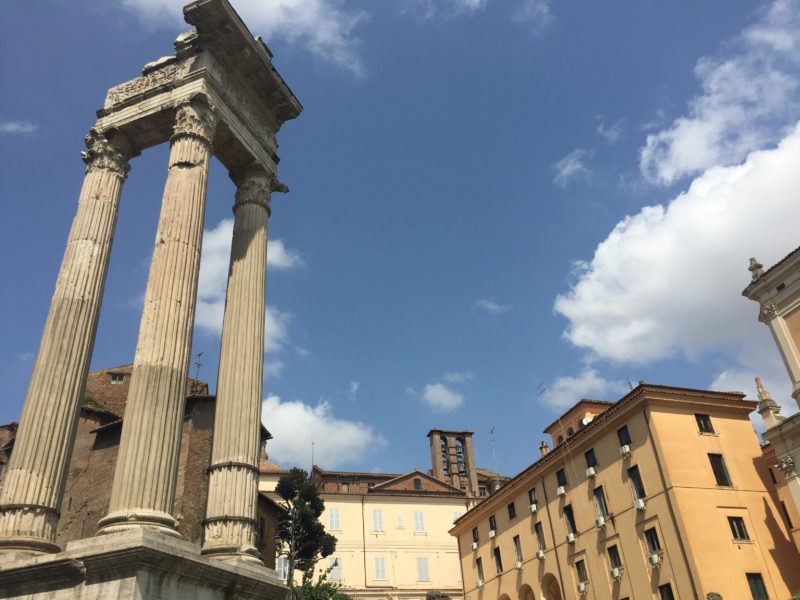
As a Jew growing up in the Los Angeles San Fernando Valley, it was impossible to meet another member of the community who hadn’t been touched by the Holocaust. Both my grandfathers were stationed in the Pacific Theater during World War II but countless friends had grandparents who had escaped, fought in the war, fought for the resistance, had great uncles, aunts, cousins, or friends lost in the toxic clouds of the gas chambers, or hid in barns for years in the hopes their perceived sickness would dissipate in the eyes of the Nazis and salvation would someday come. Each year at Hebrew school, a new member of our grandparent’s generation would step forward ready to speak about what they experienced during their time in the Second World War. The students would fill the synagogue and listen intently to a new but equally nauseating recount of survival in a death camp, how the guards would beat an inmate to death and laugh, use another inmate as target practice, or wash their hands with soap until their skin turned raw thinking that after they touched a Jew, they would contract disease or vermin. Often, as the person recounted their story, their spouse would sit in the front row supportive of their partner’s decision but unable tospeak their own truth, as if worried that giving the past a name would return its power with full-force back into the present. Each time a new person stepped forward to tell their story, someone in the audience would ask why they chose now to speak, and each time the person would have the same answer, “I’ll be gone soon and then who will tell my story? I must share my experience so no one can forget what happened to me.” Cognizant of their own mortality, they gained a sense of immortality by sharing an intimate, yet terrifying, part of themselves.
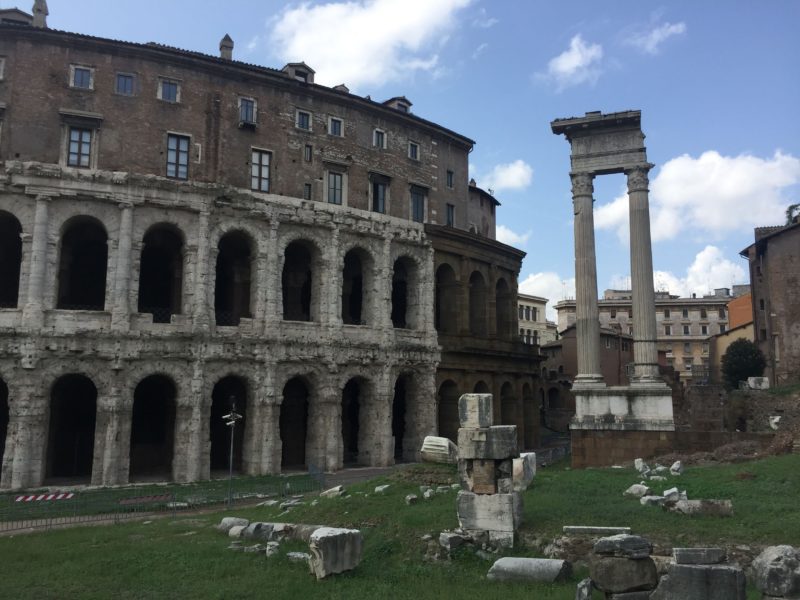
The largest collection of sampietrini in Rome, is in the Jewish Ghetto becoming as ubiquitous as the kosher restaurants and combination Hebrew-Italian-English menus. The more than one dozen stones are a fabric of the neighborhood, like the children playing soccer or the gates once closing each night beginning in the 16th century when Pope Paul IV revoked all rights of Roman Jews. Those within the ghetto learned to survive within the rules of law becoming skilled traders and money lenders. In the same neighborhood nearly four hundred years later, Nazis rounded up over 1,000 Jews from their homes and loaded them in boxcars to Auschwitz with only 16 surviving at the end of the war. My wife and I went inside the bakery on the recommendation of a friend. Before Shabbat, the line for bread or pastries extends out the door and down the block. The staff are all women with gray or white curls in their hair. They remind me of my great grandmother, who was a baker in Russia, stout, burly, and–according to my father–able to throw my great grandpa over her shoulders after finding him tied-up and in line for execution during the October Revolution, where she proceeded to toss him in a hidden closet in her bakery until procuring safe passage to America. Like my great grandmother, the women in the bakery don’t smile until they see a mother or father enter with a baby. They coo just a tad at the newborn before their stony glares return. The room fills with the smell of buttery dough, caramelized sugars, and the slightly sour aroma of the wild cherry tart we had come to taste. The pastries on display were different then back home and the language surrounding us remained unattainable, but the bakery felt familiar. It wasbathed in the pure scents of sugar, fruit, and butter as we stood in line waiting to sample the typical dessert for which the bakery and entire neighborhood had become known, like the restaurants, the kosher dishes, and the rows upon rows of brass stones.
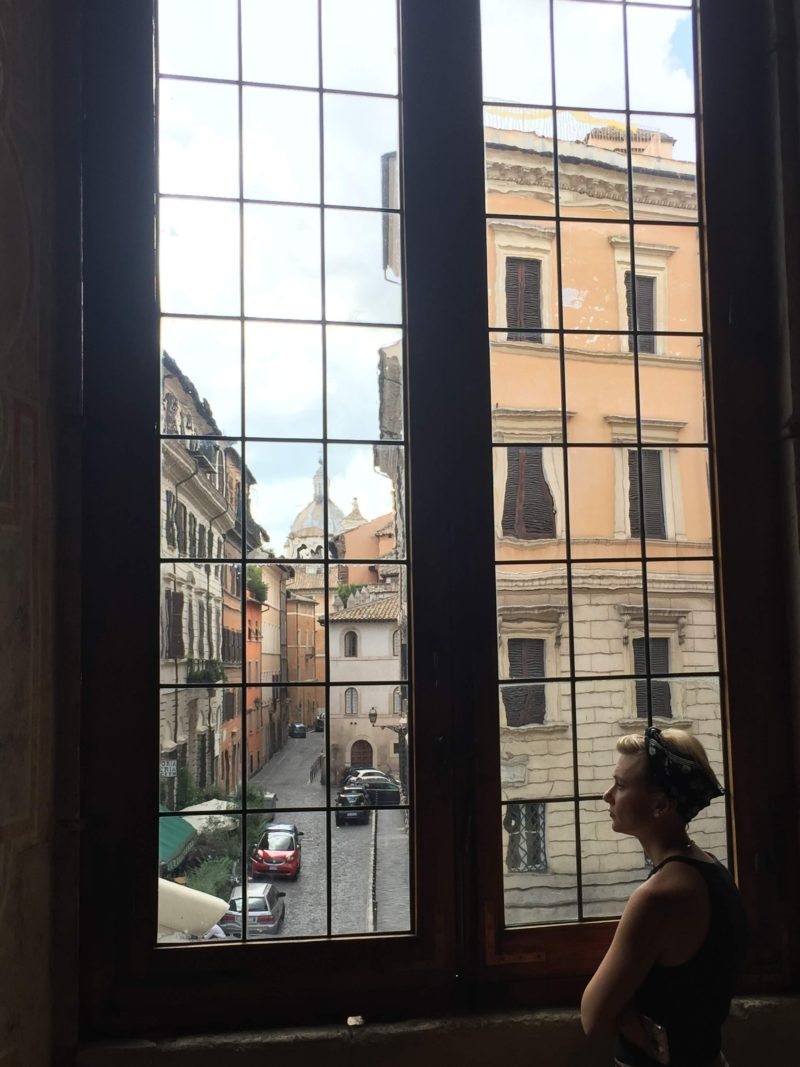
Standing over the brass cobblestones around the corner from my apartment, I was reminded of how the Jewish community chose to stand during the Mourner’s Kaddish. The prayer was not meant to speak about death but instead offered a good word for those feeling a loss of faith, the pain of death, or life’s elusive meaning. It also served as a reminder for those who perished during the Holocaust without a burial ground on which loved ones could place pebbles or those left with any remaining loved ones who could place pebbles at all. The Jewish community instead chose to raise their voices in prayer for those who had no one else. My father was always superstitious believing people whose parents were alive should not stand and recite the Mourner’s Kaddish. While the entire congregation would stand at the end of a Shabbat ceremony or during High Holidays, my family would sit rather than tempt fate. After my grandfather died, my father finally stood. The power of standing with everyone else nearly moved me to tears, noticing how the tradition with which I had grown up suddenly changed, shifting my world off its axis and reminding me that my grandfather was no longer around. But with my father standing, his memory carried on.
I thought of my father when hovering over the stone as if remembering the names—the lives—of those engraved in the plaques, which have taken the place of pebbles on the streets of Rome. From the distance of Europe, I saw pictures of mourners stacking pebbles like walls in front of the Tree of Life Synagogue in Pittsburgh and the Poway Synagogue in San Diego. It reminded me of when in 1999, at the Jewish Community Center in Granada Hills, California–a place I attended preschool and summer camp, knew the teachers and administrators, located less than two and half miles from my parents’ home–a man entered with a Glock 26 semi-automatic and opened fire. He wounded five people including three children, a secretary who always gave me candy when I would visit with her, and a teenage counselor—a friend of my sister’s. I read about the rise of antisemitism across the United States and Europe, embodied in the younger generation of the Alt-Right like a thought-leader who tweeted, “Here’s the thing jews [sic]. Real or fake, I don’t give a fuck about the holocaust, mmmkay. #HolocaustMemorialDay,” revealing quickly and unabashedly the words of Primo Levy who wrote, “Those who deny Auschwitz would be ready to remake it.” And still, we as a community across the globe continue to endure—choose to stand against the experiences growing more perilous every day simply by continuing to stand at all.
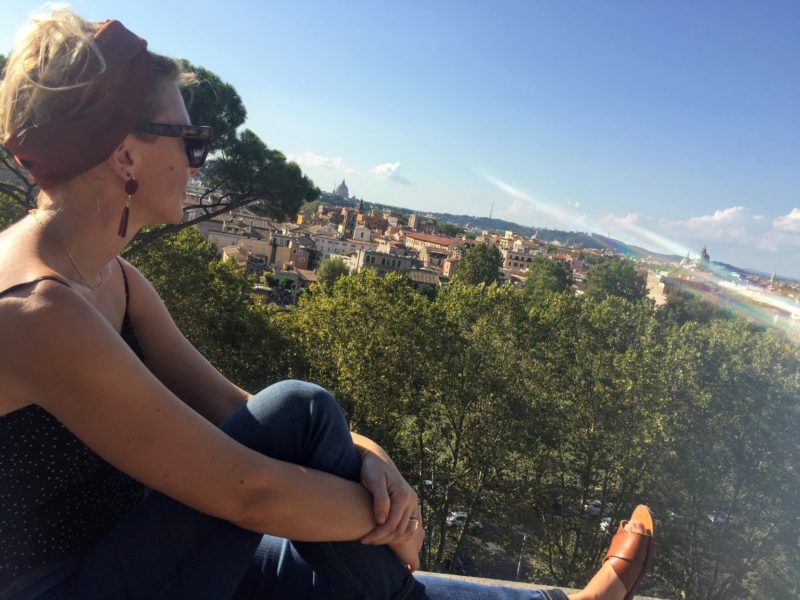
Above the sampietrini, I turned to the events and stories from my youth when those of my grandparent’s generation stood in front of me and shared, their voices shouting in my ears on the streets of Rome like poltergeists unwilling to be forgotten; I thought about the loss of that generation, those known as “The Greatest Generation,” who fought one of the last wars dividing “good and evil.” In the cool evening of the city, my wife stood in a daze pouring across the names on the brass over and over again. She thought about more than the names and instead wondered about the people, imagining what their lives could have been, where their histories would have taken them if they could have been memorialized with deeds instead of stone. We took a breath, stood tall, and continued our walk down the street back home. But at that moment, as my wife wondered about the lives not lived, I terrorized over the pebbles I haven’t yet placed, those pebbles no one would ever set down. As a child, my family would comb through trees scattered around the cemetery looking for stones to place for our loved ones. By the time I reached my thirties, my mother brought a sack of pebbles ensuring the family had enough for all of our memories when we carried on the traditions of casting our family in eternal stone. While writing specifically about his time in Auschwitz, Primo Levy said, “Even in this place one can survive, and therefore one must want to survive, to tell the story, to bear witness…We are slaves, deprived of every right, exposed to every insult, condemned to certain death, but we still possess one power, and we must defend it with all our strength for it is the last — the power to refuse our consent.”
Perhaps, in the cobbled medieval maze of Rome, with the thousands of Jews yet to have plaques placed in their names or those without loved ones placing pebbles by their graves, the cobblestones paving the city’s streets could stand in their stead, millions of memories holding up Rome, supporting the Jewish Ghetto, and embracing those individuals named on the sampietrini, now eternally remembered.
Douglas Weissmann is a graduate of the Master of Fine Arts program in Creative Writing at the University of San Francisco and was inspired by his time living in Rome, Italy. His Young Adult series and New Adult novel were released by Epic Press in Fall 2016. His fiction has been published in 3 Elements Review, Wild Musette, Kingdoms in the Wild, and Lamplight Underground. He also received second place in the imustbeoff.com travel writing contest in 2019. He currently lives in a full house in Los Angeles, California with his wife, daughter, cat, and dog.

